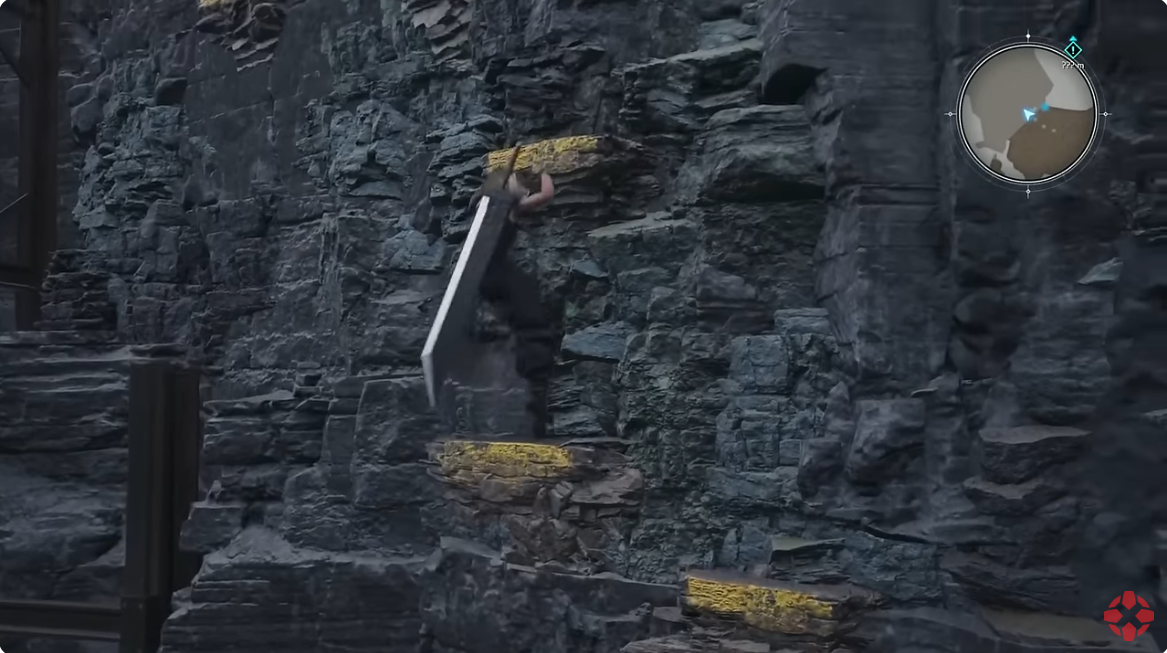After a three-year hiatus, Assassin’s Creed returns with Mirage. From a visuals and technical perspective, the team at Ubisoft has gone for a “less is more” approach. Powered by the latest iteration of the Anvil engine, Mirage looks stunning, often due to the myriad features it sports that are still not commonplace in all games or engines, such as real-time lighting systems that incorporate time of day, global illumination bounce of light, dense cities, vast landscapes, and huge vistas with rich and colourful flora and fauna.
The bustling city of Baghdad and its tight streets look authentic and have a strong art direction. Sandstone buildings and looming palm trees are bathed with dense fog volumes and crepuscular rays obscuring long views. The same physically based rendering materials and packed clutter across each location still impress, mixed with atmospheric scattering, sandstorms, and a day and night cycle. The NPC count and world clutter is also high, at least on the current generation consoles, and mixed with the real-time and pre-rendered cinematics it stands up to previous entries in the series.
Some small updates came in Assassin’s Creed Valhalla and remain here, such as per-pixel motion blur, which enhance the action, though are more beneficial in the 30fps modes. However, the basis of the engine is still firmly rooted in its last and largest technical leap, which was Assassin’s Creed Unity. This leaves a stunning, rich, and vibrant world that stands proud on the last-generation consoles, but on the PS5, Xbox Series X, Series S, and PC the impact is not so flamboyant.
Some negative aspects do arise on the presentation front. I have to mention the aggressive use of chromatic aberration, which sullies the image, specifically at lower resolutions. There are also some low-quality textures, material reactions, and stiff physics and movement at times alongside obvious glitches which can dull some of the Anvil shine. It would be a lie to call it a bad-looking game, with great use of cinematography and storytelling remaining high points, along with a vivid and lived-in world. But the last generation's roots are more evident now than ever, and it doesn’t stand up to other new-gen-only games, such as Horizon Forbidden West, on a pure graphics and technical perspective.
Stealthy Upgrades
The current-generation consoles, and of course PC, remain the best place to play, and this starts with resolution and performance. Dual modes are on offer for all three current generation machines and the Quality mode maxes out at 30fps but comes with a locked, from all my counts, resolution of 3840x2160 on both PlayStation 5 and Xbox Series X. In addition to this, both consoles run identical visual settings in both modes, meaning we have full feature parity here.
The Performance mode, entitled High Framerate in the menu, does little to change the visual settings, with most reductions related to resolution. These include shadow resolution and depth of field quality, along with a minor reduction in tree and grass level of detail (LoD) and ambient occlusion (AO), which remains of a screen spaced variety, as do smaller shadows and reflections. The real difference in this mode is the frame rate now targets 60fps at the cost of engaging dynamic resolution scaling (DRS). We see a counted high of 3456x1944p, but a low of 2880x1620p can occur on both machines in dense areas – around a 43% reduction from that max of 2160p from Quality mode. In practice, the reduction is relatively minor for double the frame rate.
The Series S tells a similar tale. We see lower settings on LoD, shadow quality, textures and possibly AO and screen space reflections, but the biggest reduction remains resolution. Quality mode appears to use DRS with it most often at 2880x1620p, but I also counted a minor 20% scale to 1440p. It still offers a clean and sharp image at the same 30fps maximum of the 4K Quality mode. The reduction on Performance mode though is far more obvious, less than half of Quality’s maximum, reduced to 1920x1080p, but DRS is enabled and gives us a counted low of 1600x900p. Lower pixel density is mitigated by 2x the frame rate, but the image is more unstable and softer, and at 1080p or less, compounded by the aggressive chromatic aberration, can present a soft and muddy image. An option to disable this would be beneficial.
Raising the Anvil higher – Performance
Performance in the game is often GPU-bound, when not swamped with heavy geometric draw and NPC counts. In the bigger cities it can become CPU-bound, and this can cause some mild tearing on both current generation Xbox Series consoles. It likely uses an adaptive v-sync on PS5, but I found no areas in my tests. Using the Xbox Series X and PS5 comparison in some heavier sections of Baghdad, the game holds a locked 60fps as you enter the circular city, and this is the majority of what you will see in this mode. Some mild tearing and dips whilst flying like an eagle crop up on Series X, along with slightly more single frame dips in the real time cinematics. But the delta between them is less than 2% in the PS5’s favor and are likely CPU-related most of the time when they do.
Quality mode is rock solid on both consoles at 30fps with a sharper image quality and slightly better effects. As the High Frame Rate mode is all but a locked 60fps on both machines this is an almost perfect choice of modes to pick from, and is really just up to which you prefer.
Xbox Series S is largely the same story in both modes, but here the choice is more obvious as the image quality in the Quality mode is a good deal cleaner than the Performance mode, though the latter offers a very stable 60fps readout across my testing sections, compared to 30fps for the former. The big change over the Xbox Series X and PS5’s High Frame Rate mode is that cutscenes run at 30fps here and are limited to the 1080p maximum resolution. This means they look slightly worse than the Quality mode and do not gain double the performance, which is understandable as they are likely to be GPU bound on the Series S. Aside from this, we see the same single frame drops and tearing as the Xbox Series X, just a little more frequently.
Digging Up The Past
Last generation is not quite as stable. There’s only one mode on both the PS4 and PS4 Pro consoles. We see the PS4 Pro come out with a counted 2560x1440p resolution, which may dip if DRS is enabled. The image is very sharp and clean, and compared to the Series S Quality mode it is not that far removed, although the chromatic aberration is still an eye sore. The main sacrifices made on all last generation machines are textures, increased pop-in, reduced LoD, fewer NPCs, and reduced world clutter, in order to hit a largely locked 30fps. The areas of real time cutscenes with depth of field can cause a few dropped frames, but by and large this is a great 30fps presentation of the game and delivers almost all the same visual splendour and Arabian adventure of the current-generation machines.
PlayStation 4 and Xbox One are next and here the gaps can be the biggest. Settings are aligned to the PS4 Pro with the same reductions on all areas in addition to resolution, including texture quality and filtering. Dynamic resolution scaling is in effect, and the PS4 scales from 1920x1080p to 1600x900p. The Xbox One tops out at 1600x900p but hits a low of 1120x630p which does severely impact the image quality and that dreaded chromatic aberration can overpower the screen at times when it drops this low. Both consoles look soft, and this has been true of all Assassin’s Creed games since the previous generation began.
Performance is not maintained by these cuts, with both consoles often dropping frames in action, likely due to the CPU, with heavy NPC areas causing some framerate dips into the mid-20s on both. In addition, we can see GPU demands go beyond the DRS range with some cutscenes and action segments also dipping to similar levels. It’s never as bad as Assassin’s Creed Unity was back in the day, but do expect an inconsistent and sub-30fps experience often, with a far noisier image quality, very low texture quality, more pop-in, and a sub HD image on both machines, though the PS4 does offer a decent if not groundbreaking advantage over the Xbox One.
Summary
Assassin’s Creed Mirage is a strong return to the series roots, no more evident than in the fact that it looks and runs so well on 10+ year old hardware, though some more increases for current generation hardware would have been nice. The visual upgrades and 60fps modes are very welcome, particularly so in the Series S, but they are not generationally different. The engine was ahead of its time in 2014 and many others have had to play catch up, but in 2023 Mirage is a reflection of the series’ former glory with an iterative update over Origins and Valhalla. It stands out as a great last-generation game that has maximised the potential of those machines, but leaves current-generation owners' hardware an undiscovered treasure.








